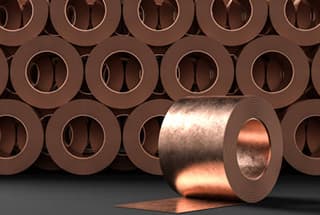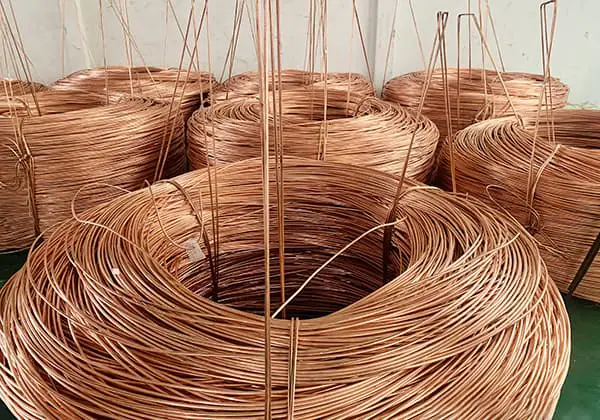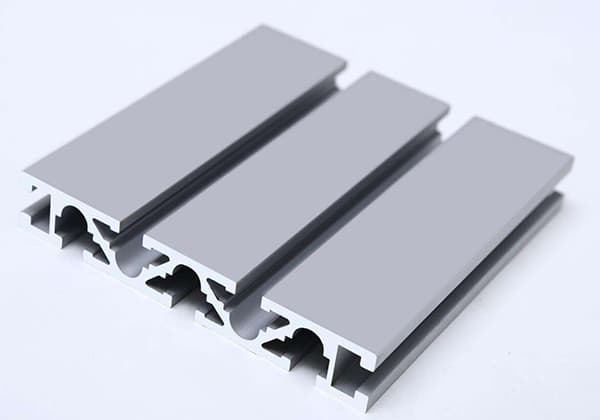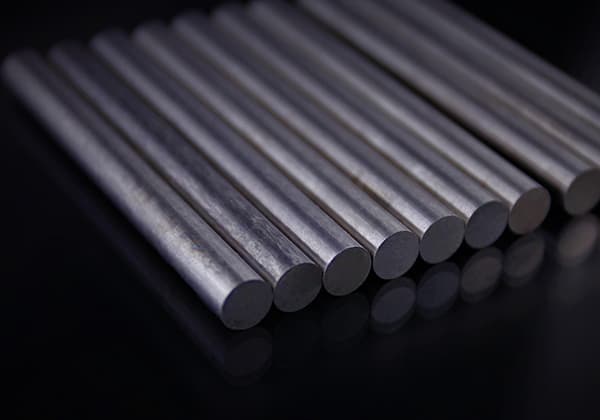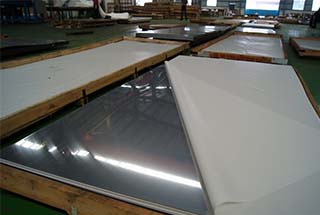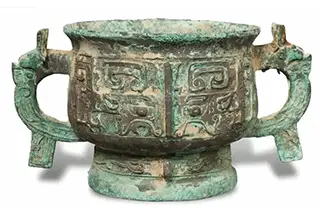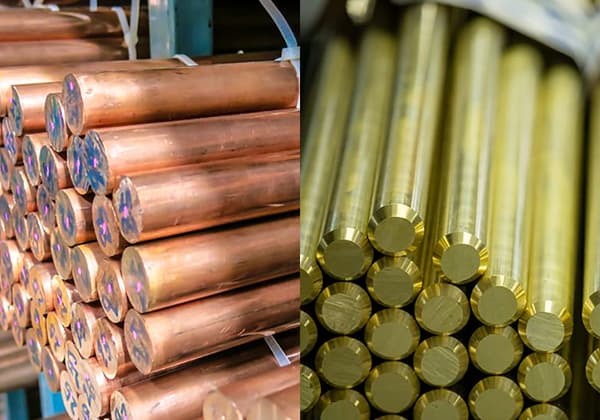
Ever wondered how a simple metal like copper impacts your daily life? From powering your gadgets to building skyscrapers, copper’s role is indispensable. This article explores copper’s diverse applications across various industries, from electronics to transportation. Discover how this ancient metal continues to drive modern innovations, ensuring efficiency and sustainability in technology and infrastructure. By the end, you’ll understand why copper is more vital than ever in shaping our future. Dive in to learn how copper’s unique properties make it a cornerstone of modern civilization.
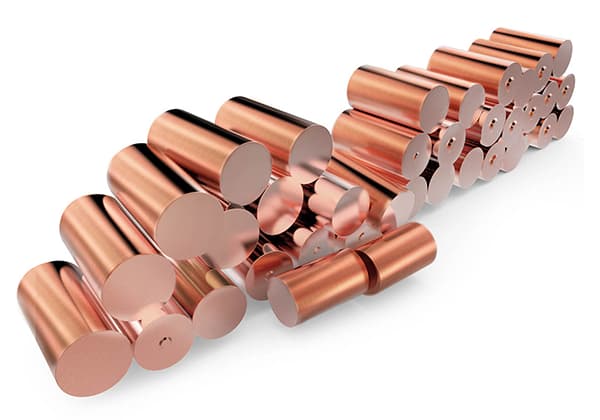
Copper: One of the earliest metals discovered by humans. Archaeological discoveries in tombs have shown that as early as 6,000 years ago, the Egyptians were already using copper tools. Copper in nature can be found as native copper, cuprite and chalcocite. Native copper and cuprite are scarce.

Nowadays, more than 80% of copper in the world is refined from chalcocite, a type of low-grade ore containing only about 2-3% copper. The development of copper metallurgy has gone through a long process, but even today, copper is mainly smelted by pyrometallurgy, which accounts for around 80% of the world’s total copper production.
Modern hydrometallurgy techniques are gradually being introduced, significantly reducing the cost of copper refining.
Copper boasts many valuable physical and chemical properties, such as high thermal and electrical conductivity, chemical stability, high tensile strength, good weldability, corrosion resistance, ductility, and malleability.
Pure copper can be drawn into very fine wires or made into very thin copper foils. It can form alloys with zinc, tin, lead, manganese, cobalt, nickel, aluminum, iron, and other metals. The alloys formed are mainly divided into three categories: brass, which is a copper-zinc alloy; bronze, which is a copper-tin alloy; and cupronickel, which is a copper-cobalt-nickel alloy.
Proportion of main performance applications of copper and copper alloys.
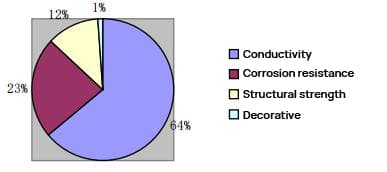
Copper is a non-ferrous metal that has a close relationship with humans and is widely used in the fields of electrical engineering, light industry, machinery manufacturing, construction industry, national defense industry, etc. In China, copper consumption ranks second only to aluminum among nonferrous metal materials.
According to average annual consumption per capita: developed countries (accounting for about 1.1 billion people) is between 10-20 kg; developing countries (accounting for about 4.9 billion people) is between 0-2 kg.
The copper consumption level in developed countries is significantly higher than that in developing countries. In developed countries, an average resident needs to consume about one ton of copper in his lifetime, which is a considerable number.
The comparison of the above two data shows that the consumption level of copper reflects the development level of a country to some extent. Although China’s demand for copper has increased significantly in recent years, there are still some poor areas in rural areas where the average annual consumption per capita is only about 0.1 kg, which is similar to India (0.13 kg), indicating a vast development potential.
Copper Consumption Structure in China:
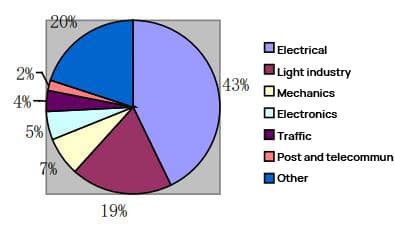
Copper Consumption Structure in the United States:
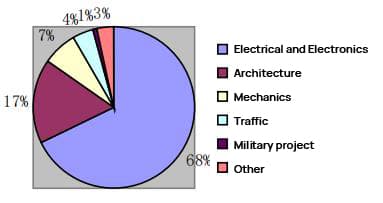
From the above two figures, we can see that there is a significant difference in copper consumption structure between China and the United States. The consumption of electrical and electronic products in China accounts for half of the total consumption, while in the US, it accounts for 70%.
The US also has a larger copper consumption in the construction industry, while in China, the consumption of copper in construction is negligible. Compared with European and American countries, China’s application of copper in construction has just started in recent years, with huge potential market.
According to statistics, the use of copper in housing in the United States increased from 120 kg per household in 1970 to 200 kg in 1996. On average, cars used 10 kg of copper per vehicle in 1950 and increased to 19 kg in 1996. Electric vehicles require an increase in copper usage from 25 kg to 40 kg per vehicle.
Allocation of copper usage in various construction sectors in the global copper market.
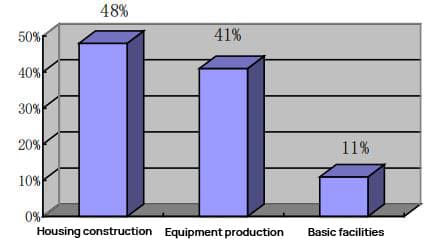
Specific allocation of copper usage in various construction sectors in the global copper market is as follows:
(1) Housing construction, including: piping systems (water, heat, gas, fire sprinklers, etc.); house facilities (air conditioning, refrigerators, etc.); building decoration (roofs, gutter decorations, etc.); communication lines (audio, video, data, etc.); power supply systems.
(2) Equipment production, including: industrial equipment (motors, transformers, etc.); transportation (cars, railways, aircraft, etc.); electronic devices; light industrial products (household appliances, instruments, tools, etc.).
(3) Basic infrastructure, including: large-scale engineering projects (transportation facilities, petrochemical industry, mining and metallurgy, etc.); electric power industry (transmission, distribution, etc.); communication networks. It is worth noting that housing construction is directly related to people’s living standards, and copper has the highest proportion of application in this area. In particular, China regards residential construction as an important part of driving the development of the national economy. It can be seen that actively promoting the application of copper plays an important role in the country’s economic and social development.
Application of copper in the electrical industry:
(1) Power transmission
National electricity consumption data from 1998 to 2003.
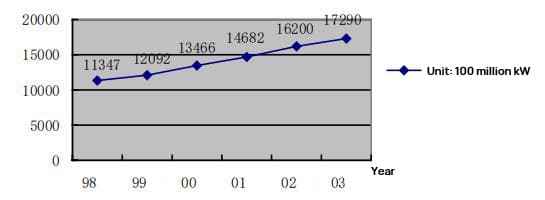
The above figure shows the electricity consumption situation in China from 1998 to 2003, with 2003 as a predicted value. The rapid increase in electricity demand driven by China’s economic development requires a large amount of highly conductive copper in power transmission, mainly used in power cables, busbars, transformers, switches, connectors, and interconnects. In the process of transmitting power through wires and cables, electrical resistances generate heat and waste energy.
From the perspective of energy conservation and economics, the world is currently promoting the “optimal cable cross-section” standard. In the past, the popular standard was based solely on reducing the cable cross-section to minimize the minimum allowable size of the cable under the rated current required by the design, in order to reduce initial installation costs without causing dangerous overheating.
Cables laid according to this standard have lower installation costs, but consume relatively more energy due to electrical resistance during long-term use. The “optimal cable cross-section” standard considers both one-time installation costs and energy consumption, appropriately enlarging the cable size for energy saving and optimal comprehensive economic benefits. According to the new standard, the cable cross-section is often more than doubled compared to the old standard, which can achieve a saving effect of about 50%.
In the past, due to insufficient copper supply, China has adopted the measure of replacing copper with aluminum in overhead high-voltage transmission lines, considering that aluminum accounts for only 30% of copper’s weight and hoping to reduce weight. However, from the perspective of environmental protection, overhead transmission lines will be replaced by underground cable laying. Under such circumstances, aluminum has disadvantages such as poor conductivity and larger cable size compared to copper, making it less competitive.
For the same reasons, replacing aluminum-wound transformers with copper-wound transformers, which are energy-efficient, is also a wise choice.
(2) Motor manufacturing
In motor manufacturing, copper alloys with high conductivity and strength are widely used. The main copper parts are the stator, rotor, and shaft head. In large motors, the winding needs to be cooled by water or hydrogen gas, called double-water internal cooling or hydrogen-cooled motors, which require long hollow conductors.
Motors are heavy electricity consumers, accounting for about 60% of all electricity supply. The cumulative electricity bill for running a motor is very high. Generally, it reaches the cost of the motor itself within the first 500 hours of operation and is 4-16 times the cost within a year. Over the entire service life, the cost can reach 200 times.
A slight improvement in motor efficiency can not only save energy but also achieve significant economic benefits. Developing and applying efficient motors is a hot topic in the world today. Because the internal energy consumption of motors mainly comes from the resistance loss of windings, increasing the cross-sectional area of copper wire is a key measure to develop efficient motors. In recent years, some high-efficiency motors have been developed that use 25-100% more copper winding than traditional motors. Currently, the US Department of Energy is funding a development project that proposes to produce motor rotors using cast copper technology.
(3) Communication cables
Since the 1980s, due to the advantages of large current-carrying capacity of optical fiber cables, they have been continuously replacing copper cables on communication backbones and rapidly promoting application. However, a large amount of copper is still needed to convert electrical energy into optical energy and input user lines. With the development of the communication industry, people’s dependence on communication is increasing, and the demand for both optical fiber cables and copper wires will continue to increase.
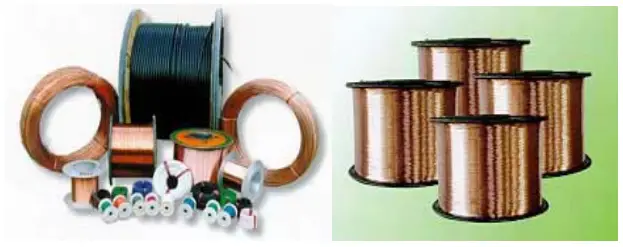
(4) Residential electrical wiring
In recent years, with the improvement of people’s living standards in China and the rapid popularization of household appliances, the electrical load of residential electricity has grown rapidly. As shown in Figure 6.6, in 1987, residential electricity consumption was 26.96 billion kilowatt-hours (kWh); by 1996, it had surged to 113.1 billion kWh, an increase of 3.2 times.
Despite this growth, there is still a significant gap compared to developed countries. For example, in 1995, per capita electricity consumption in the United States was 14.6 times that of China, and in Japan it was 8.6 times that of China. There is still great potential for China’s residential electricity consumption to grow in the future. It is expected to increase by 1.4 times from 1996 to 2005.
Currently, the design capacity of residential electrical wiring in China is relatively low. Taking a two-bedroom apartment as an example, Table 6.l compares the architectural electrical design standards in Beijing, Hong Kong, and Japan. It can be seen that Hong Kong and Japan have fully considered the demand for increasing residential electricity consumption in their designs, while China’s residential electrical wiring design capacity needs to be improved urgently.
Copper’s Application in the Electronics Industry
The electronics industry is an emerging industry that continues to develop new copper products and new applications as it grows. Currently, its applications have developed from electron tubes and printed circuits to microelectronics and semiconductor integrated circuits.
(1) Electron tubes
Electron tubes mainly consist of high-frequency and ultra-high-frequency transmitting tubes, waveguides, and magnetron tubes, which require high-purity oxygen-free copper and dispersion-strengthened oxygen-free copper.
(2) Printed circuits
Copper printed circuits use copper foil as a surface, which is pasted on a plastic board as a support. The circuit wiring diagram is printed on the copper plate by photolithography, and the excess part is removed by etching to leave an interconnected circuit.
Then, punch holes at the connection between the printed circuit board and the outside, insert the terminals of discrete components or other parts and weld them on this path to complete the assembly of a complete circuit. If the immersion plating method is used, all joint welding can be completed at once.
Therefore, printed circuits are widely used in situations that require precise circuit layout, such as radios, televisions, computers, etc., saving a lot of labor in wiring and fixing circuits and requiring a large amount of copper foil consumption. In addition, various low-priced, low-melting, and good-flowing copper-based solder materials are also required for circuit connections.
(3) Integrated Circuits
The core of microelectronics technology is integrated circuits. An integrated circuit refers to a miniaturized circuit in which the components and interconnects that make up the circuit are integrated inside, on the surface or above a semiconductor crystal material substrate (chip) using specialized process technology.
This type of microcircuit is thousands or even millions of times smaller in size and weight than the most compact discrete component circuit in structure. Its emergence has caused a huge change in computers and has become the foundation of modern information technology.
Currently developed very-large-scale integrated circuits can produce hundreds of thousands or even millions of transistors on a single chip area smaller than a fingernail. Recently, the internationally renowned computer company IBM has made a breakthrough by using copper instead of aluminum as interconnects in silicon chips.
This new type of copper microchip can achieve a 30% efficiency gain, reduce circuit line sizes to 0.12 microns, and enable up to 2 million transistors to be integrated on a single chip. This has opened up new prospects for the ancient metal copper in the latest technology field of semiconductor integrated circuits.
(4) Lead Frames
To protect the normal operation of integrated circuits or hybrid circuits, they need to be packaged; and during packaging, a large number of connectors in the circuit need to be led out from the seal.
These leads require a certain strength to form the supporting framework of the integrated packaging circuit, called the lead frame.
In actual production, to achieve high-speed and large-scale production, lead frames are usually continuously stamped on a metal strip in a specific arrangement. The lead frame material accounts for 1/3 to 1/4 of the total cost of the integrated circuit and is widely used; therefore, low cost is necessary.
Copper alloys have low prices, high strength, conductivity, and thermal conductivity, excellent processing performance, solderability, and corrosion resistance. Through alloying, their properties can be controlled within a large range to better meet the performance requirements of lead frames.
Copper has become an important material for lead frames and is currently the most widely used material for copper in microelectronic devices.
Copper’s Application in the Energy and Petrochemical Industry
(1) Energy Industry
Both thermal power and atomic power generation rely on steam to do work. The loop of steam is as follows: the boiler generates steam – the steam drives the turbine to work – the steam after work is sent to the condenser – cooled into water – returned to the boiler to become steam again.
During this period, the main condenser is composed of tube plates and condenser tubes. Copper is used to manufacture them because of its good thermal conductivity and resistance to water corrosion. They are all made of yellow brass, aluminum brass or white copper.
According to the data, every 10,000 kilowatts of installed capacity requires 5 tons of condenser tubes. A 600,000-kilowatt power plant requires 3,000 tons of condenser tube material. The use of solar energy also requires many copper pipes.
For example, a hotel near London equipped with a swimming pool has a solar heater that can keep the water temperature between 18-24°C in summer. The solar heater contains 784 pounds (356 kilograms) of copper pipes.
(2) Petrochemical Industry
Copper is sometimes used in the petrochemical industry as well. One such example is the use of copper-nickel alloys for heat exchangers in seawater-cooled nuclear power plants. The alloy has excellent resistance to seawater corrosion and high temperature, making it ideal for use in this application.
Copper is also used in the construction of pipelines and tanks for oil and gas transportation due to its high strength and excellent corrosion resistance.
Additionally, copper is used in catalysts for chemical reactions in refineries and other chemical plants.
(2) Petrochemical Industry
Copper and many copper alloys have good corrosion resistance in non-oxidizing acids such as aqueous solutions, hydrochloric acid, organic acids (such as acetic acid, citric acid, fatty acids, lactic acid, oxalic acid, etc.), various alkalis except ammonia, and non-oxidizing organic compounds (such as oils, phenols, alcohols, etc.).
Therefore, they are widely used in the petrochemical industry to manufacture various containers, pipeline systems, filters, pumps, and valves for contact with corrosive media.
Copper is also used to manufacture various evaporators, heat exchangers, and condensers due to its thermal conductivity. Because of its good plasticity, copper is particularly suitable for manufacturing complex structure heat exchangers with cross-woven copper pipes in modern chemical industries.
In addition, bronze is used to produce tools in petroleum refining plants because sparks will not occur on impact, which can prevent fires from occurring.
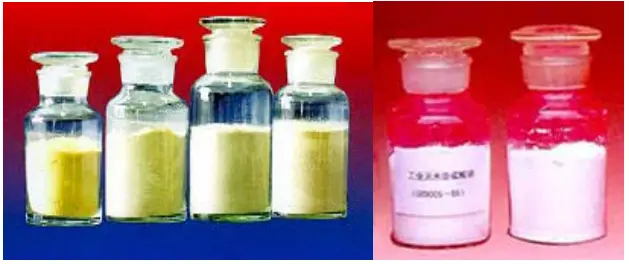
(3) Ocean Industry
The ocean covers more than 70% of the Earth’s surface, and the rational development and utilization of marine resources is increasingly valued. Seawater contains chloride ions that can easily cause corrosion, and many engineering metal materials such as copper, iron, aluminum, and even stainless copper are not resistant to seawater corrosion.
In addition, marine biofouling can also form on the surfaces of these materials, as well as non-metallic materials such as wood and glass. Copper is unique in that it is not only resistant to seawater corrosion, but also has a bactericidal effect when copper ions dissolve in water, which can prevent marine biofouling.
Therefore, copper and copper alloys are very important materials in the ocean industry and are widely used in seawater desalination plants, offshore oil and gas platforms, and other coastal and underwater facilities.
For example, pipeline systems, pumps, and valves used in seawater desalination processes, equipment used on oil and gas platforms, including splash zones and underwater bolts, drilling days, anti-biofouling sleeves, pumps, valves, and pipeline systems, and so on.
Copper’s Application in the Transportation Industry
(1) Ships
Due to their excellent resistance to seawater corrosion, many copper alloys, such as aluminum bronze, manganese bronze, aluminum brass, gunmetal (tin-zinc bronze), white copper, and nickel-copper alloy (Monel alloy), have become standard materials for shipbuilding. Copper and copper alloys account for 2-3% of the weight of warships and most large commercial vessels. The propellers of warships and most large commercial ships are made of aluminum bronze or brass.
The propellers on large ships weigh 20-25 tons each, while those on the Elizabeth Queen and Mary Queen aircraft carriers weigh up to 35 tons each. The heavy tail shafts of large ships are often made of “Admiral” gunmetal, and the conical bolts of rudders and propellers are also made of the same material. Copper and copper alloys are also widely used in engines and boiler rooms. The world’s first nuclear-powered merchant ship used 30 tons of white copper condenser tubes. Recently, large heating coils with aluminum brass pipes are being used as oil tanks.
There are 12 of these storage tanks on a 100,000-ton ship, and the corresponding heating system is quite large. The electrical equipment on board is also very complex, with engines, motors, communication systems, etc. almost entirely relying on copper and copper alloys to function.
Copper and copper alloys are often used for decoration in the cabins of ships of all sizes, and even wooden boats are preferably fastened with copper-alloy (usually silicon bronze) screws and nails, which can be mass-produced by rolling. In the past, copper cladding was often used to protect the hull from marine biofouling, but now, brushing copper-containing paint is commonly used.
During World War II, to prevent German magnetic mines from attacking ships, an anti-magnetic mine device was developed. A copper strip was attached around the copper hull and an electric current was passed through it to neutralize the ship’s magnetic field, which prevented the mines from detonating.
Since 1944, all Allied ships, totaling about 18,000, have been equipped with this demagnetization device for protection. Some large battleships require a large amount of copper for this purpose. For example, one of them uses 28 miles (about 45 kilometers) of copper wire, weighing about 30 tons.
(2) Automobiles
Each car typically contains 10-21 kilograms of copper, depending on the type and size of the vehicle. For small cars, the amount of copper used accounts for 6-9% of their weight. Copper and copper alloys are mainly used in radiators, brake system pipelines, hydraulic devices, gears, bearings, brake pads, distribution and power systems, washers, and various connectors, fittings, and decorative parts.
Radiators use a relatively large amount of copper. In modern tube-and-strip radiators, brass strips are welded into radiator tubes, and thin copper strips are folded into heat-dissipating fins. In recent years, many improvements have been made to further improve the performance of copper radiators and enhance their competitiveness with aluminum radiators.
In terms of materials, trace elements are added to copper to increase its strength and softening point without sacrificing thermal conductivity, thereby reducing the thickness of the strip and saving copper usage.
In terms of manufacturing processes, high-frequency or laser welding of copper tubes is used, and copper brazing is used instead of lead-contaminated soft soldering to assemble the radiator core.
The results of these efforts are shown in Table 6.2. Compared with brazed aluminum radiators, under the same heat dissipation conditions, that is, at the same air and coolant pressure drop, the new copper radiators are lighter in weight and significantly smaller in size, and copper’s good corrosion resistance and long service life make the advantages of copper radiators more prominent.
(3) Railways
The electrification of railways requires a large amount of copper and copper alloys. More than 2 tons of special-shaped copper wire are needed per kilometer of overhead wire. To increase its strength, a small amount of copper (about 1%) or silver (about 0.5%) is often added.
In addition, the motors, rectifiers, and control, braking, electrical, and signal systems on trains all rely on copper and copper alloys to function.
(4) Aircraft
Copper is also essential for the operation of aircraft. For example, copper materials are used for wiring, hydraulic, cooling, and pneumatic systems in aircraft, aluminum bronze tubes are used for bearing retainers and landing gear bearings, anti-magnetic copper alloys are used for navigation instruments, and many instruments use beryllium copper elastic elements, among other uses.
Applications of Copper in Mechanical and Metallurgical Industries
(1) Mechanical Engineering
Copper components can be found in almost all machines. In addition to the large amount of copper used in motors, circuits, hydraulic systems, pneumatic systems, and control systems, a variety of transmission parts and fasteners made of brass and bronze, such as gears, worm gears, worm shafts, connectors, fasteners, torsion elements, screws, nuts, etc., are all made of copper alloys.
Almost all parts that move relative to each other in a machine require bearings or bushings made of wear-resistant copper alloys, especially the cylinder liners and slide plates of large extruders and forging presses, which are almost made of bronze and can weigh several tons.
Many elastic elements are also made of silicon bronze and tin bronze. Welding tools, die-casting molds, and more rely on copper alloys.
(2) Metallurgical Equipment
The metallurgical industry is a major consumer of electricity and is known as the “electric tiger”. In the construction of a metallurgical plant, a large-scale power distribution system and power operation equipment that relies on copper must be present.
In addition, in pyrometallurgy, continuous casting technology has dominated, and the key components of the crystallizer mostly use copper alloys with high strength and high thermal conductivity, such as chromium copper and silver copper.
For electric smelting, water-cooled crucibles for vacuum arc furnaces and electric arc furnaces are made of copper tubes, and various induction heating coils are wound with copper tubes or special-shaped copper tubes and cooled by water.
(3) Alloy Additives
Copper is an important additive element in copper-iron and aluminum alloys. Adding a small amount of copper (0.2~0.5%) to low-alloy structural copper can improve its strength and resistance to atmospheric and marine corrosion.
Adding copper to corrosion-resistant cast iron and stainless copper can further improve their corrosion resistance. High-nickel alloys with around 30% copper are famous for their high strength and corrosion resistance, such as “Monel alloy”, which is widely used in the nuclear industry.
Many high-strength aluminum alloys also contain copper. Through quenching and aging heat treatment, fine particles are precipitated and distributed diffusely in the alloy, significantly improving its strength, known as age-hardened aluminum alloy.
The famous one is duralumin or hard aluminum, which is an important structural material for manufacturing airplanes and rockets and contains copper, manganese, and magnesium.
Applications of Copper in Light Industry
Light industrial products are closely related to people’s lives and have a wide variety. Due to the good comprehensive performance of copper, it can be seen everywhere in light industry. Here are a few examples:
(1) Air Conditioners and Refrigeration Units
The temperature control function of air conditioners and refrigeration units is mainly achieved through the evaporation and condensation of copper tubes in heat exchangers. The size and heat transfer performance of the heat exchange tubes largely determine the efficiency and miniaturization of the entire air conditioning machine and refrigeration unit. High thermal conductivity shaped copper tubes are used in these machines.
Recently, heat pipes with internal grooves and high fins have been developed and produced using copper’s excellent processing properties for use in heat exchangers for air conditioners, refrigeration units, chemical and waste heat recovery devices.
The total heat conduction coefficient of the new heat exchanger can be increased to 2-3 times that of ordinary pipes, and 1.2-1.3 times that of low-finned pipes, which saves 40% of copper and reduces the volume of the heat exchanger by more than 1/3.
(2) Clocks
Most of the working parts of clocks, timers, and clockwork devices currently produced are made of “clock brass.” The alloy contains 1.5-2% lead and has good processing properties, making it suitable for mass production.
For example, gears are cut from long extruded brass bars, and arbors are punched out of corresponding thickness strips. Clock faces with engraved patterns, screws, and joints are made of brass or other copper alloys.
A large number of inexpensive watches are made of brass (tin-zinc bronze) or plated with nickel-silver (white copper). Some famous clocks are made of copper and copper alloys. The hour hand of the British “Big Ben” is made of solid brass rods, and the minute hand is made of a 14-foot-long copper tube.
In a modern clock factory, copper alloys are the main materials and are processed with presses and precise molds to produce 10,000 to 30,000 clocks a day at low cost.
(3) Papermaking
In today’s rapidly changing society, paper consumption is high. The surface of the paper looks simple, but the papermaking process is very complex and requires many machines, including coolers, evaporators, beaters, paper machines, and more.
Most of these components, such as various heat exchange tubes, rollers, beating bars, semi-fluid pumps, and wire mesh, are made of copper alloys.
For example, the long-wire paper machine currently used sprays the prepared pulp onto a moving wire mesh with small mesh holes (40-60 mesh). The wire mesh is woven from brass and phosphor bronze wires, and it has a large width, typically over 20 feet (6 meters), and must be kept completely straight.
The mesh moves on a series of small brass or copper rollers, and when wet fibers with attached pulp pass through it, moisture is sucked out from below. The mesh also vibrates to bond the small fibers in the pulp together. The wire mesh size of large paper machines can be as large as 26 feet 8 inches wide (8.1 meters) and 100 feet (30.5 meters) long.
Wet pulp not only contains water but also corrosive chemical agents used in the papermaking process. To ensure paper quality, rigorous requirements are placed on the wire mesh material, which must have high strength, elasticity, and corrosion resistance, features perfectly suited for copper alloys.
(4) Printing
Copper plates are used for photolithography in printing. Polished copper plates are sensitized with photosensitive emulsion, and then exposed to photographic images. The sensitized copper plate needs to be heated to harden the emulsion.
To avoid softening due to heating, copper often contains a small amount of silver or arsenic to increase the softening temperature. Then, the plate is etched to form a printing surface with distributed concave and convex dots.
In automatic typesetting machines, copper letter molds are used to manufacture plate models, another important use for copper in printing. Letter molds are usually made of leaded brass, sometimes copper or bronze.
(5) Pharmaceuticals
In the pharmaceutical industry, various pure copper steam, boiling, and vacuum devices are used. Zinc white copper is widely used in medical instruments. Copper alloys are also commonly used materials for eyeglass frames and more.
Copper for Architecture and Art
(1) Pipeline System
Due to its beautiful appearance, durability, easy installation, safety, fire prevention, health care and many other advantages, copper water pipes have an obvious price-to-performance advantage over galvanized copper pipes and plastic pipes. In residential and public buildings, it is increasingly favored as the preferred material for water supply, heating, gas supply, and fire sprinkler systems.
In developed countries, copper water supply systems already account for a large proportion. The Manhattan Building in New York, which claims to be the sixth tallest building in the world, uses 60,000 feet (l km) of copper pipes for just its water supply system. In Europe, there is a large consumption of copper pipes for drinking water.
The average consumption of copper pipes for drinking water in the UK is 1.6 kg per person per year, while in Japan it is 0.2 kg. Galvanized copper pipes are easily corroded, and many countries have already banned their use. Hong Kong has prohibited their use since January 1996, and Shanghai since May 1998. It is imperative for China to promote the use of copper pipeline systems in housing construction.
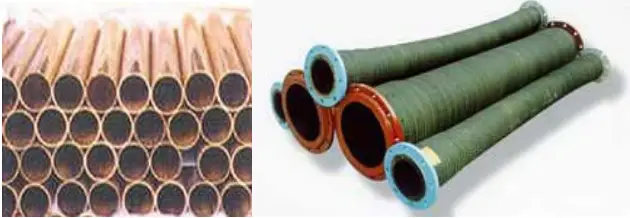
(2) House Decoration
In Europe, it is traditional to use copper plates for roofs and eaves. In Nordic countries, it is even used as wall decoration. Copper has good atmospheric corrosion resistance, durability, recyclability, excellent workability, and a beautiful color, making it very suitable for house decoration.
Its application in ancient buildings such as churches still shines brightly today, and its use in modern large-scale buildings, even apartments and houses, is increasing. For example, in London, the Commonwealth Institute Building, which represents modern British architecture, has a complex roof made of copper plates that weighs approximately 25 tons. The Crystal Palace Sports Centre, opened in 1966, has a wave-shaped roof made of 60 tons of copper.
According to statistics, in Germany, the average consumption of copper plates for roofs is 0.8 kg per person per year, while in the United States it is 0.2 kg. In addition, the use of copper products for interior decoration, such as door handles, locks, hinges, railings, lamps, wall decorations, and kitchen utensils, not only lasts long and is hygienic, but also adds an elegant atmosphere and is deeply loved by people.
(3) Sculptures and Crafts
There is no metal in the world that can be widely used to make various crafts like copper, which has been enduring from ancient times to the present day. In today’s urban construction, a large number of cast copper alloys are used to make monuments, bells, treasure vessels, statues, Buddhas, and antique imitations.
Modern musical instruments, such as flutes made of white brass and saxophones made of brass, also use copper materials. Various exquisite artworks, cheap and good-looking gold-plated or imitation gold/silver jewelry also require the use of copper alloys with different compositions.
The Tian Tan Buddha in Hong Kong, completed in 1996, is made of tin, zinc, and leaded bronze, weighs 206 tons and is 26 meters high. The South Sea Guanyin Buddha in Putuo Mountain, Zhejiang Province, completed in 1997, is 20 meters high and weighs 70 tons. It is the world’s first giant copper statue built using imitation gold materials.
After that, a bronze Sakyamuni Buddha statue with a height of 88 meters was completed in Wuxi. Taller Buddha statues are under construction in Hainan Island, Jiu Hua Mountain, and India and Japan.
(4) Coins
Since our human ancestors started using coins for trading, copper and copper alloys have been used to make coins, which has been passed down from generation to generation until now. With the development of modern activities such as automatic coin-operated telephones, transportation, and shopping that benefit people, the use of copper for coin production has increased over time.
In addition to changing dimensions, different alloy compositions can be conveniently used to manufacture and distinguish currencies of different denominations by changing their alloy colors.
Commonly used coins include “silver coins” containing 25% nickel, brass coins containing 20% zinc and 1% tin, and “copper” coins containing small amounts of tin (3%) and zinc (1.5%). The production of copper coins worldwide consumes tens of thousands of tons of copper every year.
The Royal Mint in London alone produces seven hundred million copper coins every year, requiring approximately seven thousand tons of metal.
Applications of Copper in High-Tech
Copper not only has a wide range of applications in traditional industries but also plays an important role in emerging industries and high-tech fields. For example:
(1) Computers
Information technology is the forefront of high-tech. It relies on the tool of modern human wisdom, the computer, to process and handle the rapidly changing and vast sea of information. The heart of the computer consists of a microprocessor (including an arithmetic logic unit and a control unit) and memory.
These basic components (hardware) are all large-scale integrated circuits, with millions of interconnected transistors, resistors, capacitors, and other devices distributed on tiny chips to perform fast numerical calculations, logical operations, and massive information storage.
These integrated circuit chips need to be assembled using lead frames and printed circuits to function.
As mentioned in the previous chapter “Applications in the Electronics Industry,” copper and copper alloys are not only important materials for lead frames, solders, and printed circuit boards but also play an important role in interconnecting the tiny components of integrated circuits.
(2) Superconductivity and Low Temperature
For most materials (except for semiconductors), their electrical resistance decreases as temperature decreases. When the temperature drops to a very low level, the resistance of certain materials can disappear completely, which is called superconductivity.
The maximum temperature at which superconductivity appears is called the critical temperature of the material. The discovery of superconductivity has opened up a new frontier in electricity utilization.
With zero electrical resistance, a very large (theoretically infinite) current can be generated with a very small voltage, generating huge magnetic fields and forces, or there is no decrease in voltage or energy loss when current passes through it. Obviously, its practical applications will bring changes to human production and life, and it has attracted much attention.
However, for ordinary metals, superconductivity only appears when the temperature approaches absolute zero (0K = -273°C), which is difficult to achieve in engineering practice. In recent years, some superconductive alloys have been developed with higher critical temperatures than pure metals.
For example, Nb3Sn alloy has a critical temperature of 18.1K. However, their application still heavily relies on copper. First, these alloys must work at ultra-low temperatures, which are achieved by gas liquefaction such as liquid helium, hydrogen, and nitrogen, with liquefaction temperatures of 4K (-269°C), 20K (-253°C), and 77K (-196°C), respectively.
Copper still has good ductility and plasticity at such low temperatures, making it an essential structural and pipeline transportation material in low-temperature engineering.
In addition, superconductive alloys like Nb3Sn and NbTi are brittle and difficult to process into shaped materials, requiring copper as cladding material to bind them together.
Currently, these superconductive materials have been used to create strong magnets in medical diagnostic devices such as MRI and powerful magnetic separators in some mines. The planned maglev trains with speeds exceeding 500 km/h also rely on these superconductive materials to suspend the train and avoid the resistance of wheel-rail contact, achieving high-speed operation of the carriages.
Recently, some high-temperature superconducting materials have been discovered, most of which are composite oxides.
One of the earlier and more well-known ones is lead-containing copper-based oxide (YBa2Cu3O7), with a critical temperature of 90K, which can operate at liquid nitrogen temperatures. Currently, materials with critical temperatures near room temperature have not yet been developed, and these materials are difficult to form into large blocks, and their current density that maintains superconductivity is not high enough for use in high electricity applications. Therefore, further research and development are needed.
(3) Space Technology
In rockets, satellites, and space shuttles, many critical components also require the use of copper and copper alloys, in addition to microelectronic control systems and instrumentation equipment.
For example, the inner lining of the combustion chamber and thrust chamber of a rocket engine can use copper’s excellent thermal conductivity for cooling to maintain temperatures within allowable ranges.
The inner lining of the Ariane 5 rocket engine uses a copper-silver alloy to process 360 cooling channels that are cooled with liquid hydrogen during rocket launch. In addition, copper alloys are also standard materials used for load-bearing components in satellite structures. Solar panels on satellites are usually made of copper alloys containing several other elements.
(4) High Energy Physics
Revealing the mystery of the structure of matter is a major basic scientific problem that scientists are striving for. Each step towards understanding this issue will have significant impacts on humanity. The current utilization of atomic energy is an example of this.
The latest research in modern physics has discovered that the smallest unit of matter is not molecules and atoms, but quarks and leptons that are billions of times smaller. Research on these fundamental particles often requires high energies hundreds of times greater than nuclear effects at the time of atomic bomb explosions, known as high-energy physics.
Such high energy is obtained by charged particles accelerating over long distances in a strong magnetic field, “bombarding” a fixed target (high-energy accelerator), or by colliding two streams of particles that accelerate in opposite directions (collider).
To do this, copper is used to construct a long-distance strong magnetic field channel as a winding structure. In addition, similar structures are required in controlled thermonuclear reaction devices. In order to reduce heat generation caused by the passage of large currents, these magnetic channels are wound from hollow-shaped copper rods to allow coolant to enter.
For example, the water-cooled magnet of the famous European Laboratory for Particle Physics (CERN) proton synchrotron accelerator is made up of about 300 tons of extruded copper material wound into hollow copper tubes.
The heavy ion accelerator built in China in 1984 used a total of 46 tons of pipe material, each 40 meters long with an outer diameter and inner circle. Copper tubes weighing 105 tons were used in the subsequently constructed positron-electron collider.
In the controlled thermonuclear reaction device developed in China, there are a total of 16 focusing coils, each of which is wound with a 55-meter-long copper rod. The shell is welded from copper plates, with cooling water pipes welded onto them. A total of 50 tons of copper were used in this device.
Applications of Copper Compounds
Copper compounds include copper sulfate (pentahydrate, monohydrate, and anhydrous), copper acetate, copper oxide and cuprous oxide, copper chloride and cuprous chloride, copper oxychloride, copper nitrate, copper cyanide, copper fatty acid salts, copper cyclohexane carboxylates, etc.
They have broad applications in agriculture, industry, medical, health care, and other fields. Among them, copper sulfate is the most widely used and is usually pentahydrate copper sulfate (CuSO4·5H2O), commonly known as blue vitriol due to its blue color. It is often used as a raw material for the production of many other salts.
The history of human use of copper compounds can be traced back more than 5,000 years ago when ancient Egyptians found that copper sulfate was a good mordant (dyeing agent) for staining.
According to statistics, there are currently more than a hundred factories producing copper sulfate worldwide, with an annual consumption of about 200,000 tons, of which three-quarters are used in agriculture and animal husbandry as a fungicide.
Applications of Copper Compounds in Agriculture and Animal Husbandry
Copper compounds are effective fungicides that can control all diseases caused by molds or fungi. In addition to directly soaking seeds with copper sulfate, various copper salt mixtures are commonly used in orchards and fields.
The most important ones are Bordeaux mixture (copper sulfate-lime mixture) named after the famous French wine region and Burgundy mixture (copper sulfate-soda mixture), as well as Paris green and Cuprokill, etc.
According to reports, copper fungicides can prevent more than 300 kinds of diseases that frequently occur in over a hundred crops. These crops include various perennial fruit trees such as grapes, oranges, bananas, apples, pears, peaches, etc.; Economic crops such as coffee, rubber, cotton, sugar beet, etc.; Cereals such as wheat, rice, corn, barley, oats, etc.; Beans, tomatoes, potatoes, lettuce, and so on.
Copper is also a necessary trace nutrient for maintaining the healthy growth of crops and livestock. Generally, when the available copper content in farmland soil is less than 2ppmm (1ppmm is one percent), crops will suffer from copper deficiency and reduce yield, or even fail to grow. Similarly, when the available copper content in pasture soil is less than 5ppmm, livestock will suffer from copper deficiency disease.
Currently, due to intensive high-yield operations, the widespread use of fertilizers containing little or no copper has led to land degradation and the increasing problem of copper deficiency worldwide.
To correct and prevent copper deficiency, copper salts should be supplemented in a timely manner. They can be added directly or mixed with nitrogen and phosphorus-rich fertilizers, applied to improve soil quality for long-term effect, or sprayed on the seedlings of crops every year. For livestock, besides improving pastures, copper salts can be mixed into feed or injected directly into livestock with copper deficiency symptoms.
Copper sulfate is also a growth promoter for pigs and chickens, which can improve their appetite and promote food conversion. Mixing 0.1% of copper sulfate in feed can significantly promote the weight gain of pigs and broilers. Copper ions have strong disinfectant and sterilizing effects, and can prevent the spread of some common livestock diseases.
For example, a small amount of copper in water (less than lppm) can kill snails, including those that host the blood fluke parasite, thereby preventing liver fluke disease that is easily prevalent in tropical and temperate animals. Copper sulfate can also be used to disinfect pens to prevent the spread of foot rot in cattle and sheep, as well as swine erysipelas and bovine dysentery.
In addition, copper salts can be added to eliminate annoying green algae contamination in ponds, rice fields, canals, and rivers. Copper salts can also be used as mold inhibitors and preservatives for storing grains, fruits, and vegetables. One convenient method is to wrap them with paper soaked in copper salt.
Applications of Copper Compounds in Industry
Copper compounds have wide-ranging applications in industry, and are used more or less in almost every field. Here are some examples:
Copper sulfate is a commonly used mordant in dyeing processes to improve the durability and wash resistance of gloss, and is widely used in the textile and leather industries. Copper compounds have colors such as blue, green, red, black, etc., and can be used as coloring agents for glass, ceramics, cement, and enamel. They are also components of certain hair dyes.
Copper nitrate added to fireworks produces green light, etc. Paints with added copper compounds have anti-marine biofouling properties. Some organic copper compounds are effective preservatives used to prevent corrosion in pulp, wood, wood products, canvas, and other fabrics.
Certain copper compounds are important chemical agents in the production of rubber, petroleum, and synthetic fibers, playing roles in catalysis and purification.
Copper sulfate electrolyte is used for copper plating, producing electrolytic copper foil, and purifying copper.
In the mining industry, copper sulfate is used as an activator for flotation of minerals such as lead, zinc, aluminum, and gold.
Applications of Copper Compounds in Human Health
Copper is an essential trace nutrient for human health, which is important for blood, central nervous and immune systems, development and function of hair, skin, and bone tissue, as well as internal organs such as the brain, liver, and heart.
Copper is mainly ingested through daily diet. The World Health Organization recommends that adults should ingest 0.03 milligrams of copper per kilogram of body weight per day to maintain health.
Pregnant and young children should double the amount. Copper deficiency can cause various diseases, and copper supplements and pills can be taken to supplement it. Copper ions can disinfect and sterilize, and are useful for disease prevention and hygiene.
For example, they can kill bacteria such as E. coli and dysentery in water, eliminate snails and slugs that spread schistosomiasis, and mosquito larvae that spread malaria.
They can also be used in swimming pools to prevent contamination by green algae and the spread of athlete’s foot through the floor, etc. Copper compounds can be used to treat certain diseases. It is known that wearing a copper ring can treat arthritis.
Copper sulphates have been used to treat lung disease and mental illness in some Western countries, while in some African and Asian countries they have been used to treat ulcers and skin diseases. Copper-containing drugs are currently being developed.


